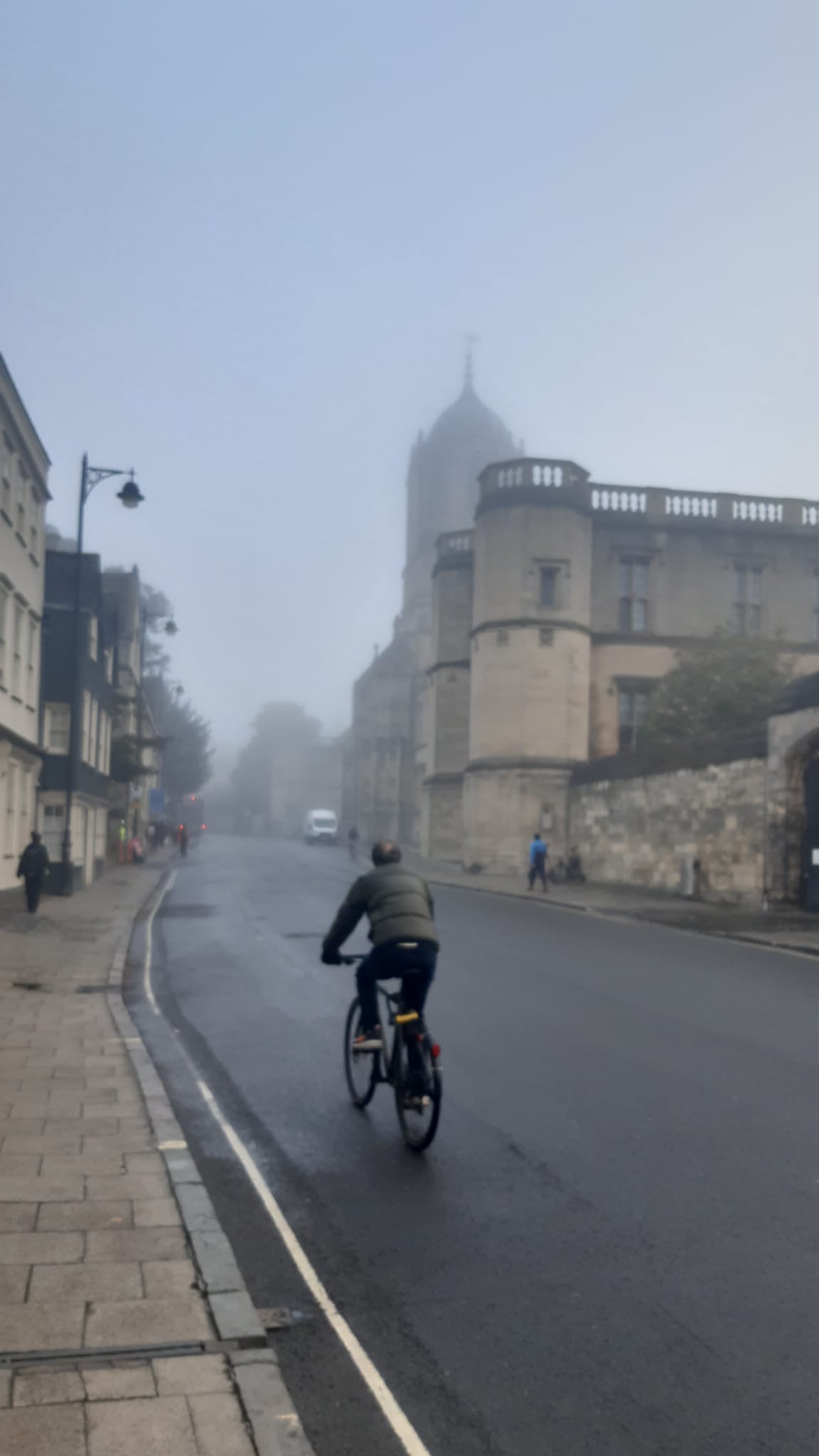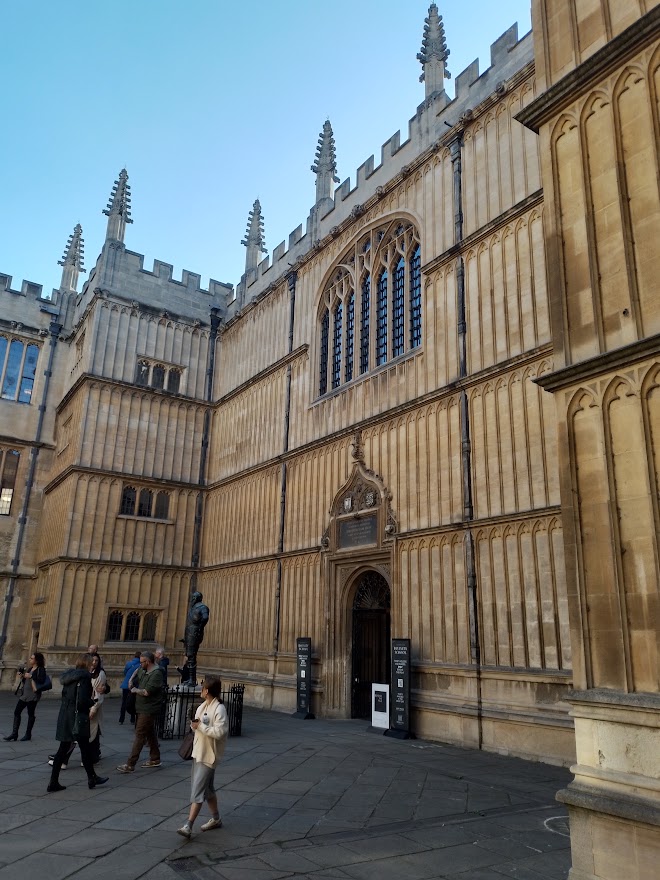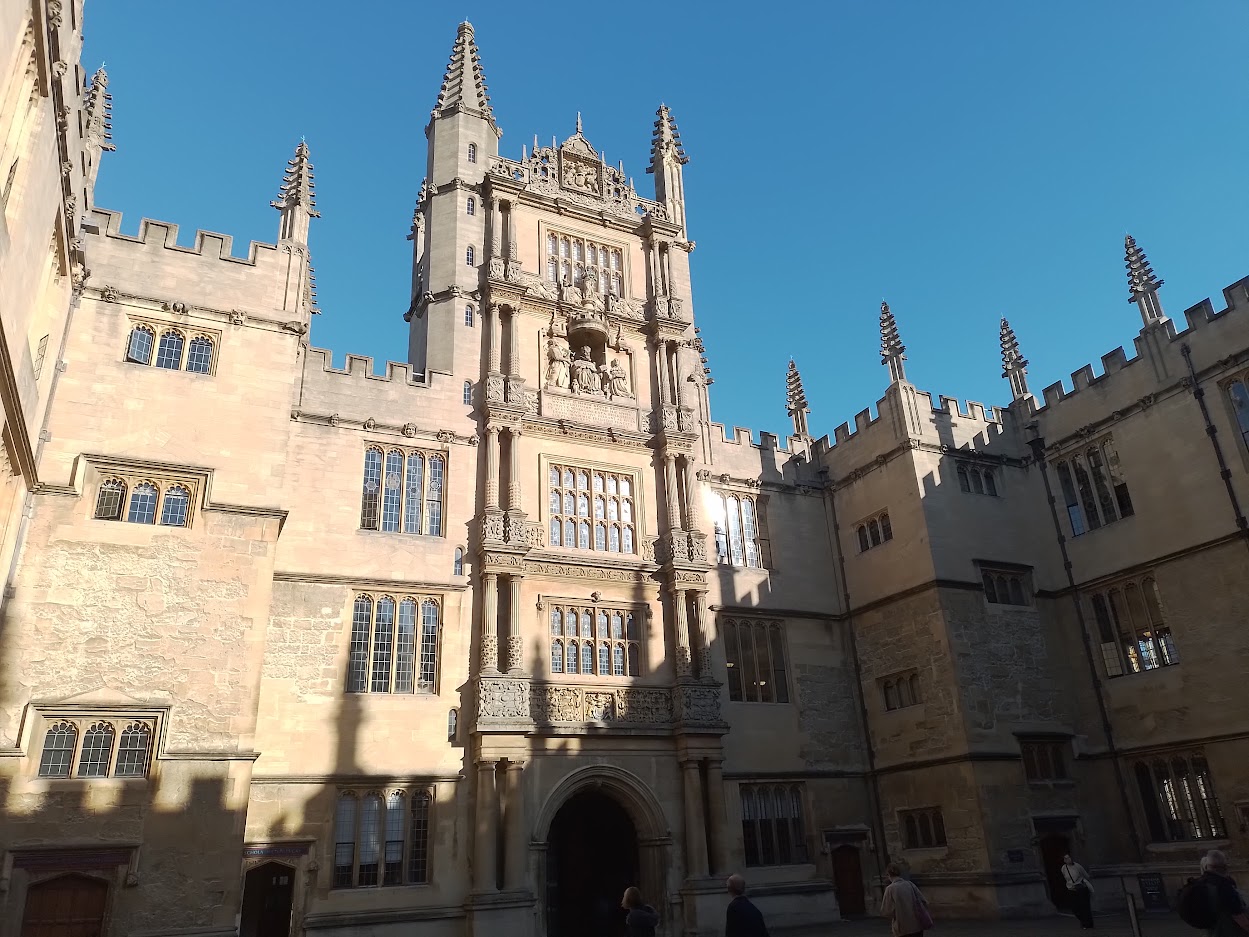Opening (8.42-9): LGL
Like Alice’s over at the Rad Cam, my day begins at 8.42 precisely. This week, I have been allocated to open the Lower Gladstone Link, turning on the computers and the printer (PCAS machine). Rather too often, one of the pesky History Faculty team get here before we do despite the fact that the Lower part of the link contains almost exclusively Old Bodleian books and is part of our opening rota! As much as I might want it to be in these instances, my work is, unfortunately, not done, with the LGL always seeming to have quite a bit of reshelving to do each morning. Perhaps it’s the fact it’s a little tucked away, perhaps it’s that it closes half-an-hour earlier than the rest of the library, or perhaps it’s due to the large number of book scans it seems to generate, but I quite often don’t make it through the whole replacing trolley before my 9am shift.
This subterranean segment of the Old Bodleian (named after nineteenth-century Liberal Prime Minister William Ewart Gladstone who designed its distinctive rolling metal stacks when this was a staff-only, closed-stack space) also contains two shelfmarks endemic to it, and notoriously difficult to understand or explain (which I would, no doubt, fail to do adequately if I tried now): the “M” shelfmark containing all different types of Humanities material categorised by size and the year they entered our catalogue; and the “Nicholson” sequence named after a nineteenth-century Bodley’s librarian who designed it, presumably as a nasty trick to confuse readers for at least the next century-and-a-half. All I will say is that each digit after the first in the first part of the call number clarifies the first, so 3265 e. 46 is between 326 e. 567 and 327 e. 1308, not after both. And look out for the letter in between; despite being in the middle, this is the first way the books are classified so you won’t find a “d” and an “e” next to each other!

MED (9-12):
Well, enough of boring you with shelfmark explanations that took me weeks of hands-on practice to get my head around! Every Monday, Wednesday and Friday morning I help out on the Main Enquiry Desk (MED) which serves both as the first point-of-call for in-person enquiries about the Old Bodleian and as the place where all emails sent to the Reader Services address, regarding all of the Bodleian libraries, end up and our answered. I’ll head up there in the Lower Reading Room just before opening time at 9am on these days, help out with clearing the off-site books whose loans have expired (lapsed) from Lower’s Self-Collect and check the inbox. This will usually consist mainly of questions regarding access to the library, advance off-site book requests and technical issues. Updating myself with the latest emails landing in the junk folder can also be an entertaining way to start the day!
Today, after an extended correspondence, I am expecting a visit from television producer who has come to view past issues of University of Oxford student newspapers looking for information regarding a certain former PM who studied here (like all other university-educated Prime Ministers since the Second World War except for Gordon Brown). Much to my disappointment, and despite asking if I would be onsite to help, the producer doesn’t come to see me. I thought, perhaps, I might be interviewed for the documentary with a short video of the “librarian” and his views on said Prime Minister an invaluable contribution. But, alas, it was not be and my five minutes of fame are delayed to some other occasion.
Still, my morning on the MED did involve researching the works of amateur botanist and early photographer Anna Atkins (1799-1872) after an enquiry by an undoubtedly precocious Year 9 school student. Atkins is best known for her 1843 book Photographs of British Algae: Cyanotype Impressions, reputed to be the first published book illustrated with photographs and making her possibly the earliest female photographer in history. Though these facts are impressive, the prints themselves which she produced are even more so in the beautiful simplicity of the process used to achieve them and the beauty of the colour and pattern of the end result. Invented only a year earlier by a friend of hers, this is how the New York Public Library, which holds one of the extant copies of British Algae, describes the process of cyanotype:
“Herschel… discovered that colorless, water-soluble iron salts, when exposed to sunlight, form the compound known as Prussian Blue; unexposed areas remain unaffected and the salt rinses away in plain water, leaving a blue ‘negative’ image. Inexpensive and easy to use, the blueprinting process, or cyanotype, is familiar today as an artists’ medium as well as a popular children’s pastime…”
And so my morning, waiting for a brush with stardom that never arrived, was lightened by looking through the NYPL’s digitised, open access version of these cyanotypes, seeming to foreshadow the paintings of Yves Klein and Henri Matisse’s cut-outs in their brilliant, if incidental, use of the colour blue.
Lunch (12-1.30):
Finishing at the Old Bodleian at 12 for early lunch, I wolfed down my sandwich in expectation for a bit of a wander round town before the walk up to the Oxford Brookes Headington campus for this week’s training session. Deciding that a trip to the charity shops of Jericho might be a bit ambitious in the time I had, I opted instead for a quick jaunt to the Oxfam on Broad Street which, despite being the first and oldest branch in the world, I had always found rather disappointing. I was rewarded today though with some bargain vinyl to add to my collection and I started my journey up Headington Hill with a jaunty spring in my step while I chatted to my artist sister on the phone about the Atkins cyanotypes.

Trip to Brookes (1.30-4.30):
I then arrived at Brookes after the slightly-strenuous climb in time for our tour of the library kicking off today’s training. My first impression was that it could hardly have been more different than the Old Bodleian, mainly in its attitude towards readers which also informs its architectural style and physical layout. Throughout the afternoon, whether admiring its individual and group-study spaces, or learning about staff’s marketing initiatives, teaching, and reading list organisation, I was struck by how the student experience of using the library informed pretty much everything the librarians did. Although the Bodleian clearly must cater to a far larger number of academics and external researchers, contains an almost-infinitely greater number and variety of books, and appeals to those with a taste for the gothic over the metallic, I would say the University of Oxford as a whole has a lot to learn from Brookes in its emphasis on the importance of pedagogy as an indispensable discipline for all its lecturers and academic librarians. As I said, the physical space, set over six floors, was designed for comfortable, relaxed study with both quiet and group discussion areas and rooms while there were also several self-service borrowing machines spread throughout. From my perspective as a former Master’s student at St Antony’s College, Brookes was much more proactive too in using posters and social media to get students engaged and informed about the library while also pushing for lecturers to make their reading lists available through the university’s online platform. Subject librarians (in Oxford’s terminology) or Academic liaisons (in Brookes’s) also made sure they met students in lectures, and one-on-ones at dissertation level, to explain the different resources on offer and how to use and access them.

We had the chance too to visit the Special Collections part of the library, held in the basement, of course. Rather than medieval manuscripts and government files, however, their archives were devoted in part to collections around food and drink. These included the late Antonio Carluccio’s library, Ken Hom’s “golden” wok made to celebrate the sale of one million units and, most excitingly and tantalisingly for me, only part way through Dry January, the collections of the National Brewing Library. My appetite somewhat sated by the acquisition of a commemorative beer mat, we ventured back out to the rest of the library. Alice had very kindly invited us all round to her nearby flat for coffee and a chat afterwards where we then lingered for an hour or two before venturing back out to the depressing January drizzle and, eventually, home.















Recent Comments